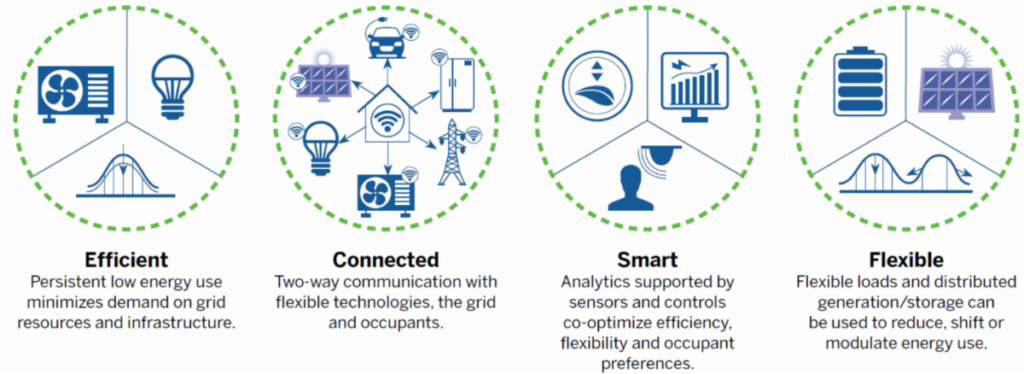May 17, 2021
National Roadmap for Grid-Interactive Energy-Efficient Buildings Released
The Department of Energy's Building Technologies Office announced the publication of A National Roadmap for Grid-Interactive Efficient Buildings, a comprehensive plan describing the value that grid-interactive efficient buildings can add to the power system.
By: Michaela Manfull

Today, the Department of Energy (DOE)’s Building Technologies Office (BTO) announced the publication of A National Roadmap for Grid-Interactive Efficient Buildings, a comprehensive plan describing the value that grid-interactive efficient buildings (GEBs) can add to the power system, their technology attributes, and recommendations for addressing the top barriers to GEB adoption and deployment.
The way electricity is generated and consumed in the US is quickly changing, including in terms of the rapid growth in variable power generation resources and the need for large-scale investments to replace aging infrastructure and modernize the grid. Buildings that coordinate electricity use with grid conditions are a flexible and cost-effective resource to address the evolving power system challenges.
Outfitted with smart technologies, GEBs are energy-efficient buildings with smart technologies characterized by the active use of distributed energy resources to optimize energy use for grid services, occupant needs and preferences, and cost reductions in a continuous and integrated way. In doing so, GEBs can play a key role in promoting greater affordability, resilience, environmental performance, and reliability.

The Roadmap – which was developed by a team led by Lawrence Berkeley National Laboratory and The Brattle Group in collaboration with the US DOE BTO – identifies the most important barriers and outlines the key opportunities for full implementation of GEBs and associated demand flexibility.

The report finds that, over the next two decades, GEBs could deliver between $100 and $200 billion in savings to the US power system and cut CO2 emissions by 80 million tons per year by 2030, or 6% of total power sector CO2 emissions. GEBs could save more than the annual emissions of 50 medium-sized coal plants, or 17 million cars.
The Roadmap provides 14 recommendations for addressing the top barriers to overcome barriers to GEB adoption and deployment. Action can begin immediately on each recommendation, with completion of the most significant implementation activities being feasible within the next two years.
Highlighted priority actions from the Roadmap include:
- Improving technology interoperability and integration, along with specific hardware improvements, through research, development, and deployment.
- Enhancing and communicating the value proposition of GEBs to consumers, utilities, aggregators, grid operators, and regulators.
- Developing tools that co-optimize energy, non-energy, and financial benefits, as well as training workers on these innovative technologies.
- Using federal, state, and local government actions to “lead by example” with government buildings, expanding funding and financing, setting codes and standards, and establishing targets.
You can access the Roadmap at gebroadmap.lbl.gov.





